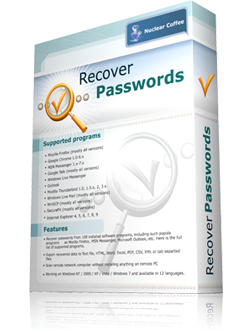How Reporters Pulled Off the Panama Papers, the Biggest Leak in Whistleblower History
April 4, 2016 15:31

When Daniel Ellsberg photocopied and leaked the Pentagon Papers to the New York Times in 1971, those 7,000 pages of top secret Vietnam War documents represented what was then the biggest whistleblower leak in history—a couple dozen megabytes if it were contained in a modern text file. Almost four decades later, WikiLeaks in 2010 published Cablegate, a world-shaking, 1.73 gigabyte collection of classified State Department communications that was almost a hundred times bigger.
If there’s some Moore’s Law of Leaks, however, it seems to be exponential. Just five years have passed since WikiLeaks’ Cablegate coup, and now the world is grappling with a whistleblower megaleak on a scale never seen before: 2.6 terabytes, well over a thousandfold larger.
On Sunday, more than a hundred media outlets around the world, coordinated by the Washington, DC-based International Consortium of Investigative Journalists, released stories on the Panama Papers, a gargantuan collection of leaked documents exposing a widespread system of global tax evasion. The leak includes more than 4.8 million emails, 3 million database files, and 2.1 million PDFs from the Panamanian law firm Mossack Fonseca that, according to analysis of the leaked documents, appears to specialize in creating shell companies that its clients have used to hide their assets.
“This is pretty much every document from this firm over a 40-year period,” ICIJ director Gerard Ryle told WIRED in a phone call, arguing that at “about 2,000 times larger than the WikiLeaks state department cables,” it’s indeed the biggest leak in history.
The source warned that his or her ‘life is in danger,’ was only willing to communicate via encrypted channels, and refused to meet in person.
Neither the ICIJ nor any of the reporters it’s worked with have made the leaked data public. But the scandal resulting from their reporting has already touched celebrities, athletes, business executives and world leaders. The documents trace $2 billion of hidden money tied to Vladimir Putin through accounts held in the names of family members and his celebrated musician friend Sergei Roldugin. Icelandic Prime Minister Sigmundur Gunnlaugsson is facing demands from the previous Icelandic prime minister that he resign after the Mossack Fonseca documents showed that Gunnlaugsson may have failed to disclose ownership of a stake in certain Icelandic banks under the government’s rules for officials. And the leaks drag FIFA officials back into the news, showing that even an ethics lawyer for the world soccer body had financial ties to another FIFA official already accused of corruption.
But beyond those revelations—and there will likely be more as the reporting around the Panama Papers continues—the leak represents an unprecedented story in itself: How an anonymous whistleblower was able to spirit out and surreptitiously send journalists a gargantuan collection of files, which were then analyzed by more than 400 reporters in secret over more than a year before a coordinated effort to go public.
How You Coordinate History’s Biggest Leak
The Panama Papers leak began, according to ICIJ director Ryle, in late 2014, when an unknown source reached out to the German newspaper Suddeutsche Zeitung, which had reported previously on a smaller leak of Mossack Fonseca files to German government regulators. A Suddeutsche Zeitung reporter named Bastian Obermayer says that the source contacted him via encrypted chat, offering some sort of data intended “to make these crimes public.” But the source warned that his or her “life is in danger,” was only willing to communicate via encrypted channels, and refused to meet in person.
“How much data are we talking about?” Obermayer asked.
“More than you have ever seen,” the source responded, according to Obermayer.
Obermayer tells WIRED he communicated with his source over a series of encrypted channels that they frequently changed, each time deleting all history from their prior exchange. He alludes to crypto apps like Signal and Threema, as well as PGP-encrypted email but declines to say specifically which methods they used. Each time the reporter and source re-established a connection, they would use a known question and answer to reauthenticate each other. “I’d say ‘is it sunny?’ You’d say ‘the moon is raining’ or whatever nonsense, and then both of us can verify it’s still the other person on the device,” Obermayer says.
After seeing a portion of the documents, Suddeutsche Zeitung contacted the ICIJ, which had helped to coordinate previous tax haven megaleaks including a 2013 analysis of leaked offshore tax haven data and another leak-enabled investigation last year that focused on assets protected by the Swiss bank HSBC. ICIJ staff flew to Munich to coordinate with Suddeutsche Zeitung reporters.
Meanwhile, the shipments of leaked data continued piecemeal. “Over time we got more and more until we had all 11.5 million documents,” Ryle says. Obermayer declined to explain how their leaker sent Suddeutsche Zeitung hundreds of gigabytes or even terabytes of information at a time. That’s far too much to send over email, of course, though that quantity of data could easily be sent anonymously in the form of shipped encrypted hard drives. “I learned a lot about making the safe transfer of big files,” Obermayer says elliptically.
We’re not WikiLeaks. We’re trying to show that journalism can be done responsibly. ICIJ Director Gerard Ryle
The ICIJ’s developers then built a two-factor-authentication-protected search engine for the leaked documents, the URL for which they shared via encrypted email with scores of news outlets including the BBC, The Guardian, Fusion, and dozens of foreign-language media outlets. The site even featured a real-time chat system, so that reporters could exchange tips and find translation for documents in languages they couldn’t read. “If you wanted to look into the Brazilian documents, you could find a Brazilian reporter,” says Ryle. “You could see who was awake and working and communicate openly. We encouraged everyone to tell everyone what they were doing.” The different media outlets eventually held their own in-person meetings, too, in Washington, Munich, London, Johannesburg and Lillehammer, Ryle says.1
Remarkably, despite all that broad access and openness, the full leaked database has yet to leak to the public—perhaps in part because it’s so large and unwieldy. Obermayer admits that rumors of the massive leak spread, but says that the data itself remained contained. “Last fall I was really nervous, thinking ‘a lot of people know,’” he says. “Word leaked out at places. But it never got further.”
Ryle says that the media organizations have no plans to release the full dataset, WikiLeaks-style, which he argues would expose the sensitive information of innocent private individuals along with the public figures on which the group’s reporting has focused. “We’re not WikiLeaks. We’re trying to show that journalism can be done responsibly,” Ryle says. He says he advised the reporters from all the participating media outlets to “go crazy, but tell us what’s in the public interest for your country.”
Weeks before contacting the subjects of the investigation, including Mossack Fonseca, Obermayer took one final precaution: he destroyed the phone and the hard drive of the laptop he’d used for his conversations with the source. “This may have seemed a little overachieving,” he notes, “But better safe than sorry.”
He notes that even now, he doesn’t know who the source actually is. “I don’t know the name of the person or the identity of the person,” Obermayer says. “But I would say I know the person. For certain periods I talked to [this person] more than to my wife.”
A New Era of Megaleaks
The leaks are bound to cause ripples around the world—not least of all for Mossack Fonseca itself. The firm didn’t respond to a request for comment from WIRED, but it wrote to the Guardian that “many of the circumstances you cite are not and have never been clients of Mossack Fonseca” and that “we have always complied with international protocols … to assure as is reasonably possible, that the companies we incorporate are not being used for tax evasion, money laundering, terrorist finance or other illicit purposes.” Another letter posted to WikiLeaks’ Twitter feed, meanwhile, purports to show how the firm has responded to its own clients:
“Oops” #PanamaPapers pic.twitter.com/ISwm6II4Hc
— WikiLeaks (@wikileaks) April 3, 2016
Mossack Fonseca and its customers won’t be the last to face an embarrassing or even incriminating megaleak. Encryption and anonymity tools like Tor have only become more widespread and easy to use, making it safer in some ways than ever before for sources to reach out to journalists across the globe. Data is more easily transferred—and with tools like Onionshare, more easily securely transferred—than ever before. And actual Moore’s Law continues to fit more data on smaller and smaller slices of hardware every year, any of which could be ferreted out of a corporation or government agency by a motivated insider and put in an envelope to a trusted journalist.
The new era of megaleaks is already underway: The Panama Papers represent the fourth tax haven leak coordinated by the ICIJ since just 2013. The Intercept, the investigative journalism outlet co-founded by Glenn Greenwald, Laura Poitras and Jeremy Scahill, has also shown how encryption tools can be combined with investigative journalism to yield leaks like last year’s Drone Papers and a collection of 70 million prison phone call records. Dozens of media outlets, including the Intercept, now host anonymous upload systems that use cryptographic protections to shield whistleblowers. All of that—unfortunately for companies and governments trying to keep hold of their dirty data, but fortunate for public interest—means that the widening pipeline of leaks isn’t likely to dry up any time soon.
1Correction 4/4/2016 11:40am: An earlier version of the story mistakenly stated that Vice News was given access to the Panama Papers.
Source link
PasswordsPro 3.5
April 4, 2016 15:19
PasswordPro is the password manager designed to help you to administer your passwords and private data in a secure way. PasswordsPro stores all your passwords and text notes in a single file, which is locked with one master password. You only have to remember one password to access all of your private data.
Please note: the program comes pre-registered and requires no registration number!
Source link
MSI targets professionals with Nvidia VR-ready mobile workstation
April 4, 2016 13:58
A VR workhorse

In case you haven’t noticed—maybe you’re waking up from a coma or just returned to civilization after deciding to go off the grid for a spell—virtual reality is a pretty big deal right now. The VR bandwagon is bursting at the seems with so many players on board, though most of the solutions up to this point have focused on the home consumer. That isn’t so with MSI’s new WT72, a system it’s pitching as the world’s first professional NVIDIA VR Ready mobile workstation.
Nvidia’s VR Ready program is largely a marketing play to help buyers identify systems that meet a certain set of requirements to “deliver an optimal VR experience.” For laptops, Nvidia’s VR Ready requirements call for an Intel Core i7-6700HQ or greater processor, GeForce GTX 980 or higher GPU, 8GB+ of RAM, three USB 3.0 ports, HDMI 1.3 output, and Windows 7 SP1 64-bit or higher.
MSI’s mobile workstation goes above and beyond the requirements by pairing Nvidia’s Quadro M5500 GPU with Intel’s 6th Generation Core i7 and Xeon processors and up to 64GB of DDR4 RAM.
There are three configurations to choose from, all of which cost a pretty penny. All three feature a 17.3-inch display, 256GB solid state storage (2 x 128GB in RAID 0) + 1TB HDD, Killer Gaming Network E2400 LAN, Blu-ray burner, memory card reader, six USB 3.0 ports, and a 9-cell battery.
Here’s what separate the three available models:
- $5,499: Core i7-6700HQ CPU, 32GB DDR4-2133, 1920×1080 resolution
- $6,299: Core i7-6920HQ CPU, 32GB DDR4-2133, 3840×2160 resolution
- $6,899: Xeon E3-1505M v5 CPU, 64GB DDR4-2133 ECC, 3840×2160 resolution
All three are Autodesk VRED certified and compatible with existing VR systems, including the two top dogs, Oculus Rift and HTC Vive.
MSI will have its new mobile workstation on display this week at the GPU Technology Conference, but didn’t say when buyers will be able to pick one up.
Source link
Open Sources
April 4, 2016 12:59
Compre agora!
R$ 88,16
Freely available source code, with contributions from thousands of programmers around the world: this is the spirit of the software revolution known as Open Source. Open Source has grabbed the computer industry’s attention. Netscape has opened the source code to Mozilla; IBM supports Apache; major database vendors haved ported their products to Linux. As enterprises realize the power of the open-source development model, Open Source is becoming a viable mainstream alternative to commercial software.Now in “Open Sources,” leaders of Open Source come together for the first time to discuss the new vision of the software industry they have created. The essays in this volume offer insight into how the Open Source movement works, why it succeeds, and where it is going.For programmers who have labored on open-source projects, “Open Sources” is the new gospel: a powerful vision from the movement’s spiritual leaders. For businesses integrating open-source software into their enterprise, “Open Sources” reveals the mysteries of how open development builds better software, and how businesses can leverage freely available software for a competitive business advantage.The contributors here have been the leaders in the open-source arena: Brian Behlendorf (Apache)Kirk McKusick (Berkeley Unix)Tim O’Reilly (Publisher, O’Reilly & Associates)Bruce Perens (Debian Project, Open Source Initiative)Tom Paquin and Jim Hamerly (mozilla.org, Netscape)Eric Raymond (Open Source Initiative)Richard Stallman (GNU, Free Software Foundation, Emacs)Michael Tiemann (Cygnus Solutions)Linus Torvalds (Linux)Paul Vixie (Bind)Larry Wall (Perl)This book explains why the majority of the Internet’s servers use open- source technologies for everything from the operating system to Web serving and email. Key technology products developed with open-source software have overtaken and surpassed the commercial efforts of billion dollar companies like Microsoft and IBM to dominate software markets. Learn the inside story of what led Netscape to decide to release its source code using the open-source mode. Learn how Cygnus Solutions builds the world’s best compilers by sharing the source code. Learn why venture capitalists are eagerly watching Red Hat Software, a company that gives its key product — Linux — away.For the first time in print, this book presents the story of the open- source phenomenon told by the people who created this movement.”Open Sources” will bring you into the world of free software and show you the revolution.
Leawo iTransfer 1.9.1
April 4, 2016 11:17

Play “How Many Eggs Can You Find” Easter game to win one of the seven amazing products plus extra chance to win the-one-and-only Prof. Media as super bonus. The game is fun and the reward is extraordinary! Play now and good luck!
Special sitewide 20% OFF coupon code for GOTD users: 2016_EST

Leawo Blu-ray Copy can backup and copy Blu-ray (BD25/BD50) and DVD (DVD-5/DVD-9) movies to disc, folder, ISO files, computer hard drive or blank disc easily. The program supports 1:1 disc to disc replication and movie-only backup, and compresses BD50 to BD25 or DVD-9 to DVD-5 without quality loss. 3 copy modes available: Full Movie, Main Movie and Custom Mode.
Special 30% OFF coupon code for GOTD users: 0402_BD

Leawo Blu-ray Ripper will help to decrypt, copy and convert Blu-ray/DVD to video and extract audios off Blu-ray/DVD for saving in multiple formats and playing back on various media players easily. It can decrypt Blu-ray discs with AACS, BD+ and the latest MKB protection, and also convert CSS-DVD discs.
Special 30% OFF coupon code for GOTD users: 0402_BD

Leawo Blu-ray Creator easily converts and burns videos in various formats to Blu-ray/DVD disc, folder or ISO Image files. With 40+ disc menu templates, Leawo Blu-ray Creator allows personalizing disc menu with images, audios, icons etc. It also has a built-in video editor to add video effects, 2D to 3D converter to create 3D Blu-ray/DVD movies, and a built-in media player for video playback, screenshots snapping, etc.
Special 30% OFF coupon code for GOTD users: 0402_BD
Source link
Panama Papers… ih rapaz…
April 4, 2016 11:15Agora a coisa ficou séria (de novo), revelado ontem (domingo) pelo jornal alemão Süddeutsche Zeitung, o Panama Papers está tornando-se o maior vazamento na história do jornalismo.
Trata-se de uma ação do Consórcio Internacional de Jornalistas Investigativos (ICIJ), que expôs 11 milhões de arquivos de dados financeiros (mais ou menos 2,6 TB) de líderes mundiais, chefes de estado, criminosos e celebridades que mantinham enormes quantias de dinheiro em paraísos fiscais.

Você deve está se perguntando: tem político brasileiro? Não precisa perguntar… não tenha dúvidas…
GameTrailers.com: I Am Faith – Story Trailer
April 4, 2016 9:56
Please note that any reproduction of this video without the express written consent of GameTrailers is expressly forbidden.
Source link
Recover Passwords
April 4, 2016 7:16
Click here to get notifications about new giveaways in your browser.

Hurry up and win one of the 50 license keys
Complete the tasks to get as many entries as possible.
Your chances of winning increase with each entry! This offer is available for several days only.

Win one of the fifty licenses for Recover Passwords!
Recover Passwords is a smart utility that helps to find your lost passwords. It will show passwords saved by web-browsers, instant messengers, email clients, FTP clients and other programs.
It will retrieve passwords from more than 100 installed software programs, including such popular programs as Microsoft Outlook, Mozilla Firefox, MSN Messenger, etc. You will be able to scan multiple remote computers at the same time without installing anything on remote PC. The program is easy to use and allows you to export passwords into HTML, TXT, CSV, XML, XLS, DOC, RTF or PDF.
No similar feedback found. Feel free to add yours!
PhotoScan PDF Pro is a simple app to take, edit, enhance, add…
$3.99 ➞ free today
Are you looking for amazing Fruit Wallpapers & Backgrounds to spicy…
$0.99 ➞ free today
Get your best look with our new photo editing app TuneFace!
$1.99 ➞ free today
Do you have children learning to count?
$3.99 ➞ free today
Moto Race – Collect coins and don’t crash, complete the levels as…
$1.99 ➞ free today
With simple text widget, you can create simple text, notes with…
$0.99 ➞ free today
Are you ready for the simplest game in the world?
$0.99 ➞ free today
Suru is a vivid, high-resolution icon pack for Android to install and…
$1.82 ➞ free today
Go on a Match 3 Magical Adventure.
$0.99 ➞ free today
QuikCoach is a sports video analyses and planning application for…
$4.96 ➞ free today
Source link
Sword Coast Legends Dev Shuts Down, But Xbox One and PS4 Versions Still Coming
April 4, 2016 5:54
n-Space has closed its doors after 21 years, according to reports.
Source link
Central De Serviços Com Software Livre
April 4, 2016 4:57Halexsandro não escreve para os grandes bancos e indústrias que contam com dezenas de funcionários de TI (o que não significa que não possam aprender com ele). Escreve para 95% da massa de empresas brasileiras formadas por quatro a dez pessoas em sua área de TI. Seu estilo de escrita permite manter uma conversa direto com o leitor, o que cria um nível de intimidade e aproximação muito bom. Nessa obra ele atalha caminhos e tempos, oferecendo um manual bê-á-bá (todos apreciamos ler sobre a teoria, mas na hora de apresentar resultados, a experiência prática dos outros agiliza o trajeto e incrementa nossa produtividade) de como instrumentalizar o departamento de suporte para obter o máximo de proveito da tecnologia disponível. Ensina a montar um Service Desk de cabo a rabo reunindo as peças do software GLPI como um Lego: desde os passos da instalação do software, suas configurações até detalhes complexos como criação do portfólio de serviços, a administração da base de conhecimento e outros detalhes como a integração com LDAP. Para quem deseja acelerar o amadurecimento de seu setor de atendimento, ler o texto será feito o empuxe da decolagem de um jato: segure-se, por que estará além do que espera em poucas horas de leitura.



